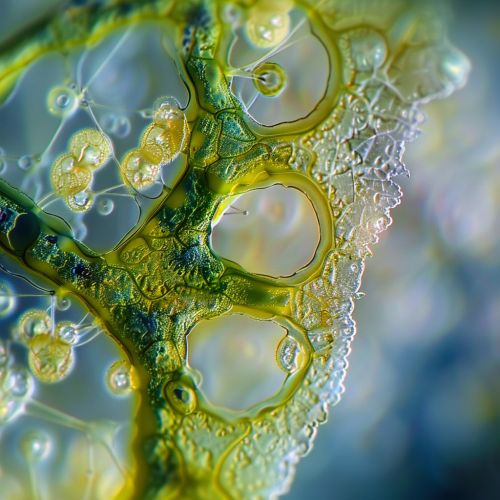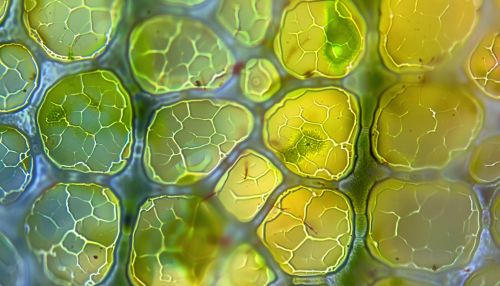PHYTOCHROME (protein)
Introduction
Phytochrome is a photoreceptor protein found in plants and bacteria that plays a crucial role in plant development and behavior. It is a biliprotein, meaning it consists of a protein moiety, known as the apoprotein, and a light-absorbing pigment, known as the chromophore. Phytochromes are responsible for detecting light signals and translating them into biochemical signals that regulate plant growth and development.


Structure and Function
Phytochromes are large proteins, typically around 120 kDa in size, and are composed of two identical subunits. Each subunit consists of a linear tetrapyrrole chromophore and an apoprotein. The chromophore is responsible for absorbing light, while the apoprotein is involved in signal transduction.
The function of phytochromes is to absorb light and convert it into a form that can be used by the plant. They do this by changing their conformation in response to light. In the dark, phytochromes exist in the Pr form, which absorbs red light. When they absorb red light, they convert to the Pfr form, which absorbs far-red light. This conversion between the Pr and Pfr forms is known as photoconversion and is reversible.
Phytochromes play a key role in a variety of plant processes, including seed germination, stem elongation, leaf expansion, and flowering. They also regulate the plant's circadian rhythms and are involved in shade avoidance and photoperiodism.
Phytochrome Types and Isoforms
There are two main types of phytochromes: Type I (or light-labile) and Type II (or light-stable). Type I phytochromes are rapidly degraded in light, while Type II phytochromes are stable in light. Both types are found in higher plants, while only Type II is found in algae and cyanobacteria.
In addition to these two types, there are also several isoforms of phytochrome, which are produced by different genes. These isoforms have different spectral properties and functions, allowing the plant to respond to a wide range of light conditions.
Phytochrome Signaling
Phytochrome signaling involves a complex network of interactions between the phytochrome itself, other proteins, and various cellular components. When a phytochrome absorbs light, it undergoes a conformational change that allows it to interact with other proteins. These interactions can lead to changes in gene expression, protein activity, and cellular processes.
One of the key components of the phytochrome signaling pathway is the Phytochrome Interacting Factors (PIFs). PIFs are a family of transcription factors that bind to phytochromes and regulate their activity. When a phytochrome is in the Pfr form, it can bind to PIFs and inhibit their activity, leading to changes in gene expression.
Phytochrome and Plant Development
Phytochromes play a crucial role in various aspects of plant development. They regulate seed germination by controlling the expression of genes involved in the breakdown of seed storage compounds. They also control stem elongation and leaf expansion by regulating cell division and cell elongation.
In addition to these roles, phytochromes also regulate the timing of flowering in many plants. They do this by controlling the expression of genes involved in the floral transition, such as FLOWERING LOCUS C (FLC) and CONSTANS (CO).
Conclusion
Phytochromes are a vital component of plant biology, playing a key role in many aspects of plant development and behavior. They allow plants to sense and respond to their environment, enabling them to adapt to changing light conditions. Understanding the structure, function, and signaling pathways of phytochromes is crucial for improving crop yields and developing new strategies for sustainable agriculture.
